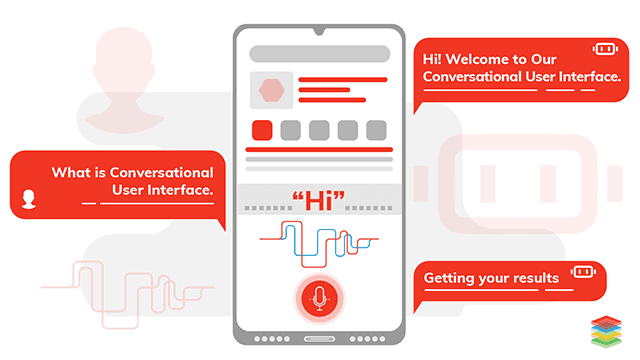
Introduction of Product Design Principles
Decision-making is what designers do daily when designing products and services. Some of these decisions are simple, while others require you to choose between two competing goals. When faced with such a dilemma, the designer must decide which goal to sacrifice for another goal. This can be difficult. The choices can be subjective or random, leading to lengthy and potentially unnecessary discussions with a large design team.
A designing process which focuses on creating engaging web Interfaces with logical thoughts, behaviors, and actions.Click to explore about our, Interaction Design Principles
Product-specific design principles are a useful tool for designers to make the right trade-off decisions. These principles support the consistency of decision-making methods in the team, build trust in decision-making, and eliminate unnecessary discussion.
Definition of Product Design Principles
Product Design Principles (or Design Principles for short) are value statements that describe the most important goals a product or service should provide to the consumer. and used to make design decisions in an organization.
What are the characteristics of good design principles?
The characteristics of good design principles are listed below:
Few in number
Aim for 3-5 principles to make sure they are remembered and used. More than that would be unmanageable, and there's no way you and everyone else could remember it all. Pinterest is one such example. Each principle is justified with a few headings and phrases. They stick to just three principles:
- Lucid - It's intuitive, not learning. This gives the user a sense of power. This improves the taste of the content.
- Anime - It's colorful. It is intuitively responsive. So surprising.
- Unbreakable - It was built for exploration. Can't be wrong. It is reversible.
Agile Development is one of the buzzwords for the software development industry.Click to explore about our, Agile User Story Principles
Differentiator
Why will anyone choose you over your competitors in the market? Your product design principles will help you answer this question. Universal design principles are for everyone. Your product design principles do not. Copying a famous design principle and putting your name on it is superfluous. Avoid generic statements like simplicity, aesthetics, etc. Could the opposite be a design principle for a different product? Otherwise, it may be too common to be a good differentiator for your product. Consider the "[Option A] instead of [Option B]" format to emphasize what your product is and isn't. It will help you say no to features and ideas. The Medium First Product Design Principles are a great example:
- Direction, not Choice.
- Be consistent.
- Evolve to perfection.
Clear and Actionable ️
Your product design principles will put you into action in your day-to-day work. They are intended to help you find potential solutions and guide you in making decisions. A vague statement with ambiguous terms won't do this. A good example is Codecademy's first design principles. It's extremely specific, it explains the reasoning behind it, and it provides a concrete example:
- One column: They have limited all of the content whenever possible to a single-column layout. This helped them focus on the page's primary purpose and gave them more control over the story. The single-column layout is also easier to implement in a responsive design system, minimizing variations between screen sizes.
Short and Memorable ️
Even if you limit yourself to three principles, you and your team will find it difficult to remember them if they are abstract and lengthy. They will not remain in your minds and encourage a particular way of thinking. Make your Product Design Principles concise and memorable instead. Asana is an excellent example of a product design principle that is both concise and memorable.
The best practices that a programmer must follow to amplify code reusability in a framework.Click to explore about our, Design Patterns in Automation Testing
How to create effective Design Principles?
Writing impactful design principles is tough than it seems. However, there are plenty of examples to learn from. Here are some simple steps you can do yourself or in workshops with your team, friends, and stakeholders.
Define Core Values
Before you write your design principles, you need to define the values necessary for the success of your product or service. These essential values could have been captured in vision statements or project briefs. If these do not exist, do some research; Find out what sets your product or service apart from your competitors. Why do customers use your product or service over competitors and available options? These values can be the ones to emphasize in your design principles. If you have more than one, prioritize the things that are most important to the product or service's success.
Consider how these values affect your users.
To ensure you are creating user-centered design principles, ask yourself why these values are important? What do they help users achieve? How will users be affected if they are not tracked? Make a note of them.
Iterate, compare, and write.
Many good ideas can be generated by having many people write a version of a design principle for each value. Voting can help choose favorites, or all versions can be combined to create a principle that everyone has contributed to.
Involving others in developing design principles increases the likelihood that they will be accepted and followed. It is also an excellent way to focus before developing a new product or service or onboarding new designers.
End-to-End solutions from Product Ideation, Product Design, Development, and Product Enablement.Click to explore about our, Talk to a Product Design Expert
After developing design principles
Make certain they are not neglected. Publish them in documentation or with your design system, discuss them in meetings regularly, include them in presentation decks, or print them and post them on walls. Hence, designers are aware of them and can easily reference them.
Most importantly, use the principles to explain and justify design decisions. Assume we're doing it because principle #3 tips the scales in favor of one of the alternatives.
Conclusion
Design principles aid in keeping essential values at the forefront of the design process. When successfully composed and applied, design principles ensure consistency in decision-making across designers and teams, eliminating the need to debate simple tradeoffs and freeing designers to focus on complex problems.
- Discover more about Principles for Human-Centered Design
- Click to explore about User Experience Design Tools


